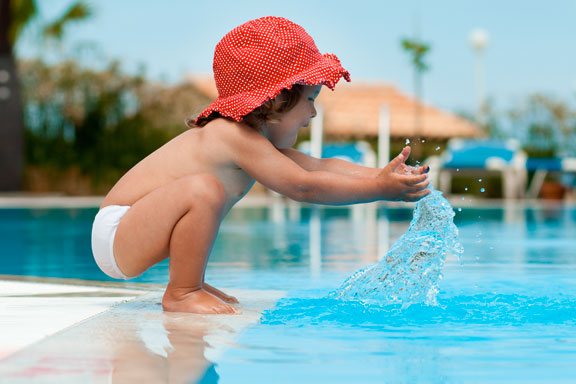If you live in or around metro Atlanta, you have been feeling temperatures into the 90s lately—a clear sign that summer is here. For many in Georgia summertime is synonymous with pool season.
Drowning is the leading cause of unintentional death for children between the ages of 1 and 4 and minority children drown in pools at an alarming rate. Since 2008, children between the ages of 1 and 3 have made up 67 percent of reported fatalities and 64 percent of injuries. In that same time span, African American children between the ages of 5 and 19 were 6 times more likely to drown in pools than white and Hispanic children that age, according to the Centers for Disease Control and Prevention. Data from USA Swimming indicate that 70 percent of African American children and 62 percent of Hispanic children cannot swim, making them more likely to drown.
The CPSC Pool or Spa Submersions: Estimated Injuries and Reported Fatalities, Report shows that each year there are:
- 390 pool or spa-related drownings for children younger than 15 with 76 percent (296) of the victims being younger than 5;
- 5,100 pool or spa-related emergency department-treated submersion injuries for children younger than 15 with 78 percent (4,000) of the injured being younger than 5.
So, with pool season about to be in full swing, this is part 1 of a 2-part blog dedicated to pool-safety. These tips will help keep you and your family safe when having fun in the pool:
-
Limit access to the pool with a fence and gate
The fence should be at least four feet tall, with no openings more than four inches wide. The gate door should swing closed on its own and then latch or lock automatically. The latch or locking mechanism should be on the inside of the gate and in a location where a small child could not reach over the fence and unlock it. All furniture and other objects—tables, chairs, and other objects that a child could use to reach the lock or hop the fence should be stored inside the fence.
-
Teach children to swim and learn to swim yourself
Some children take to the water like swans and others need a little time to get the hang of it. If your child is going to be near a pool, then your child should learn how to swim. Additionally, you should also know how to swim. I once represented parents whose child drowned right in front of them—but they could not help because neither parent could swim. Make yourself a safety feature of the pool by learning to swim—it could save your child’s life.
-
Learn CPR
If something does happen and emergency action needs to be taken, it is vital that you know CPR, especially if you have a home pool. You can learn CPR through the Red Cross. If you use a community pool, then make sure the pool has a trained lifeguard.
You can read Part 2 of Pool Safety Tips by clicking here.


